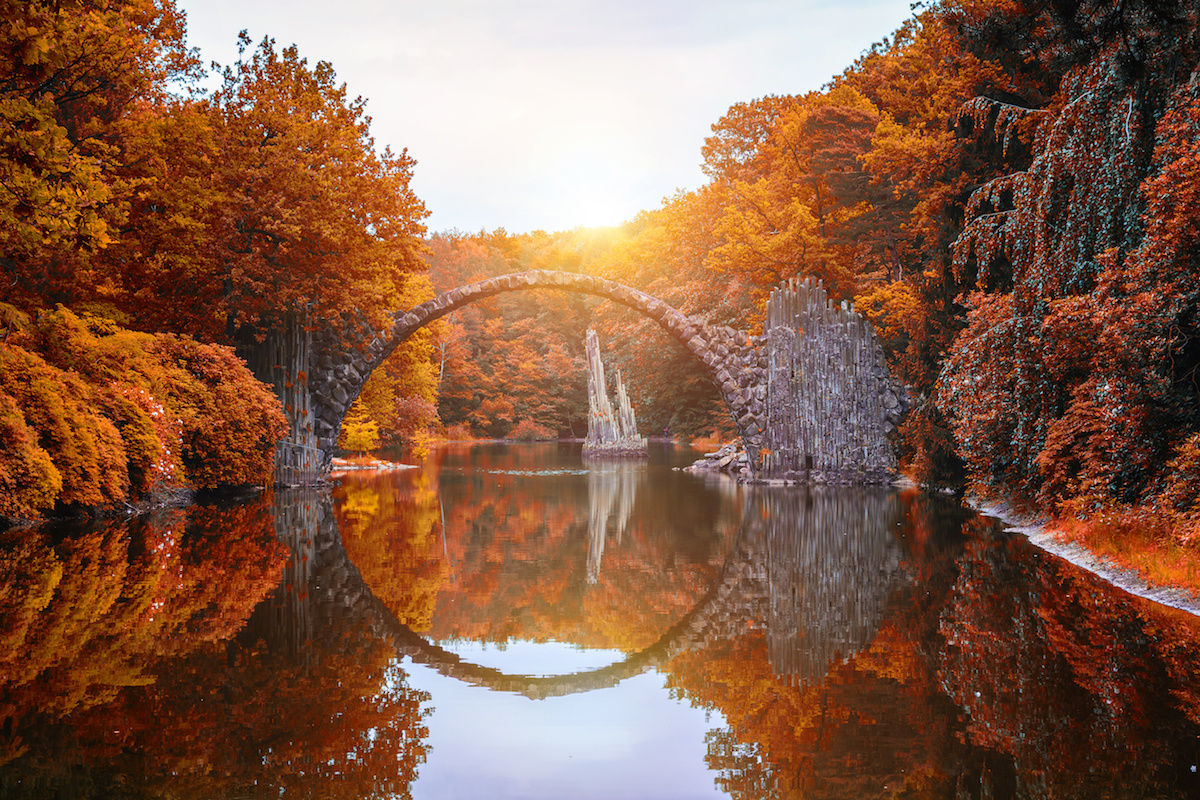A bridge can be so much more than a convenient way to cross over a body of water. Some of the world’s most famous bridges are tourist attractions in their own right, due to their breathtaking beauty, unique design or groundbreaking engineering. (A couple of these bridges might even meet all three of those goals.)
Read on to discover 25 bridges you have to see to believe — it’s the next best thing to being there in person.
The Rialto Bridge — Venice, Italy
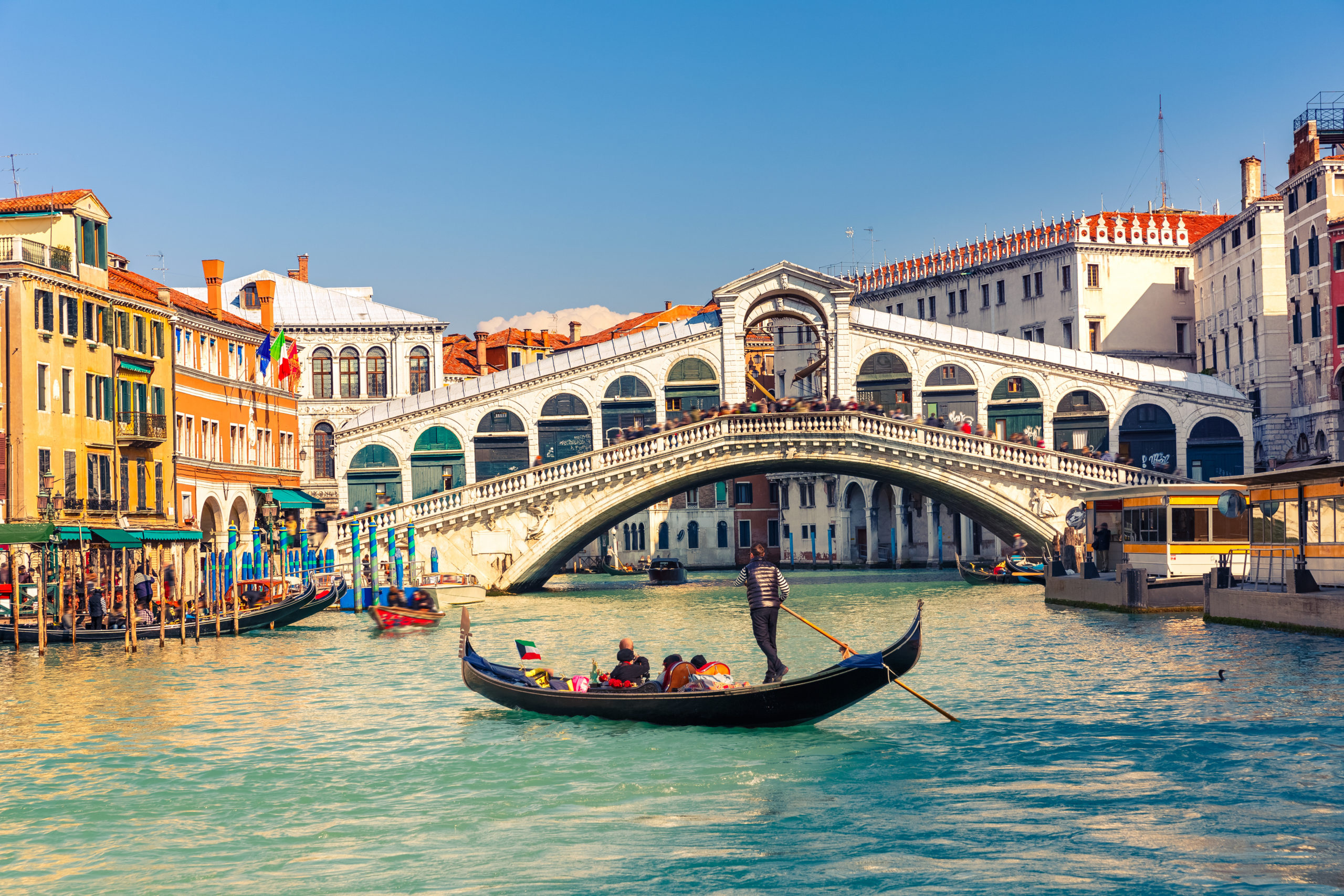
It may be a tourist trap, but Venice’s most famous bridge — and the oldest to span the Grand Canal — is a must-see. Venice has more than 400 bridges over its waterways, but the Rialto is one of the most photogenic, with its beautiful arched design and intricate stonework. It was completed in 1591 though of course has gone through several rounds of reconstruction since then.
Royal Gorge Bridge — Colorado, USA
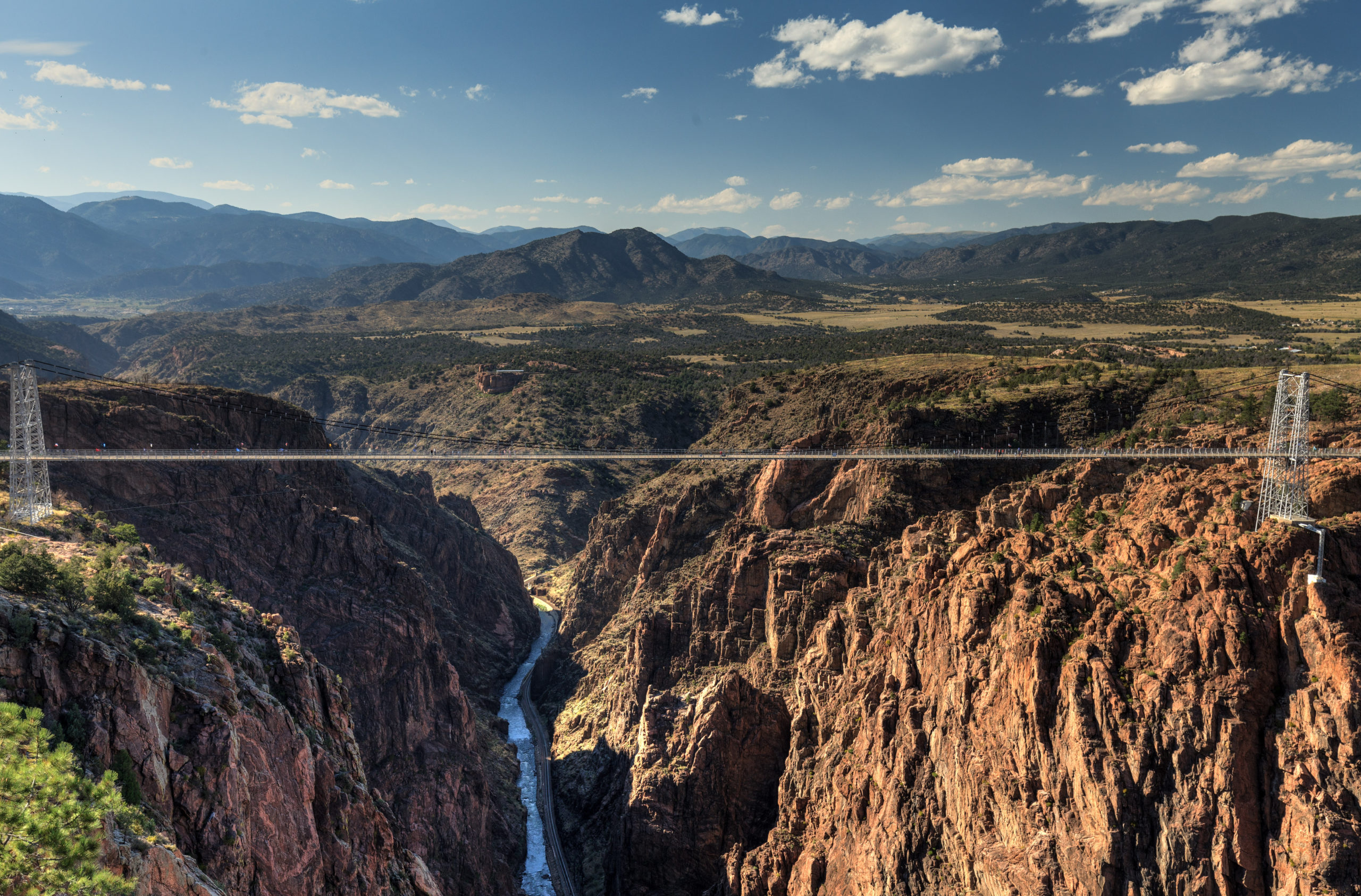
The Royal Gorge Bridge is located within Royal Gorge Bridge and Park, a 360-acre amusement park near Canon City, Colorado. Passenger vehicles are allowed to cross the bridge, but only when the park is not open to the public. The Royal Gorge Bridge is the highest suspension bridge in the U.S., and it held the title for the world’s tallest suspension bridge from 1929 (the year it was built) until 2003, when it was overtaken by China’s Beipan River Guanxing Highway Bridge.
Banpo Bridge — Seoul, South Korea
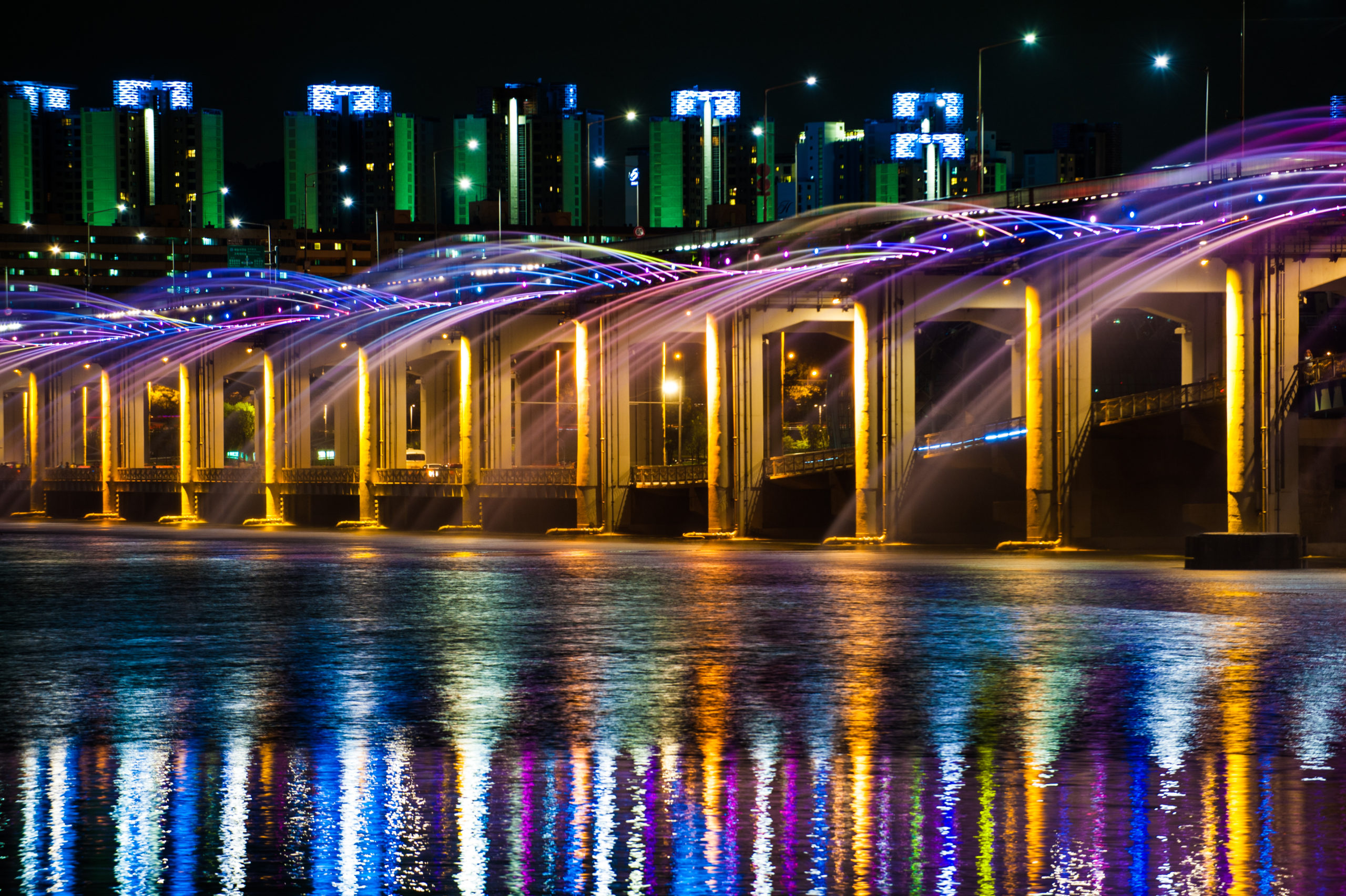
Banpodaegyo Bridge is a two-tier bridge over the Han River in downtown Seoul, South Korea built in the early 1980s. It’s a sight to behold, especially at night, when its LED-colored water jets create a spectacular rainbow effect along both sides of the bridge. And during the day, the fountain forms patterns of willow branches and leaves on the water.
Juscelino Kubitschek Bridge — Brasília, Brazil
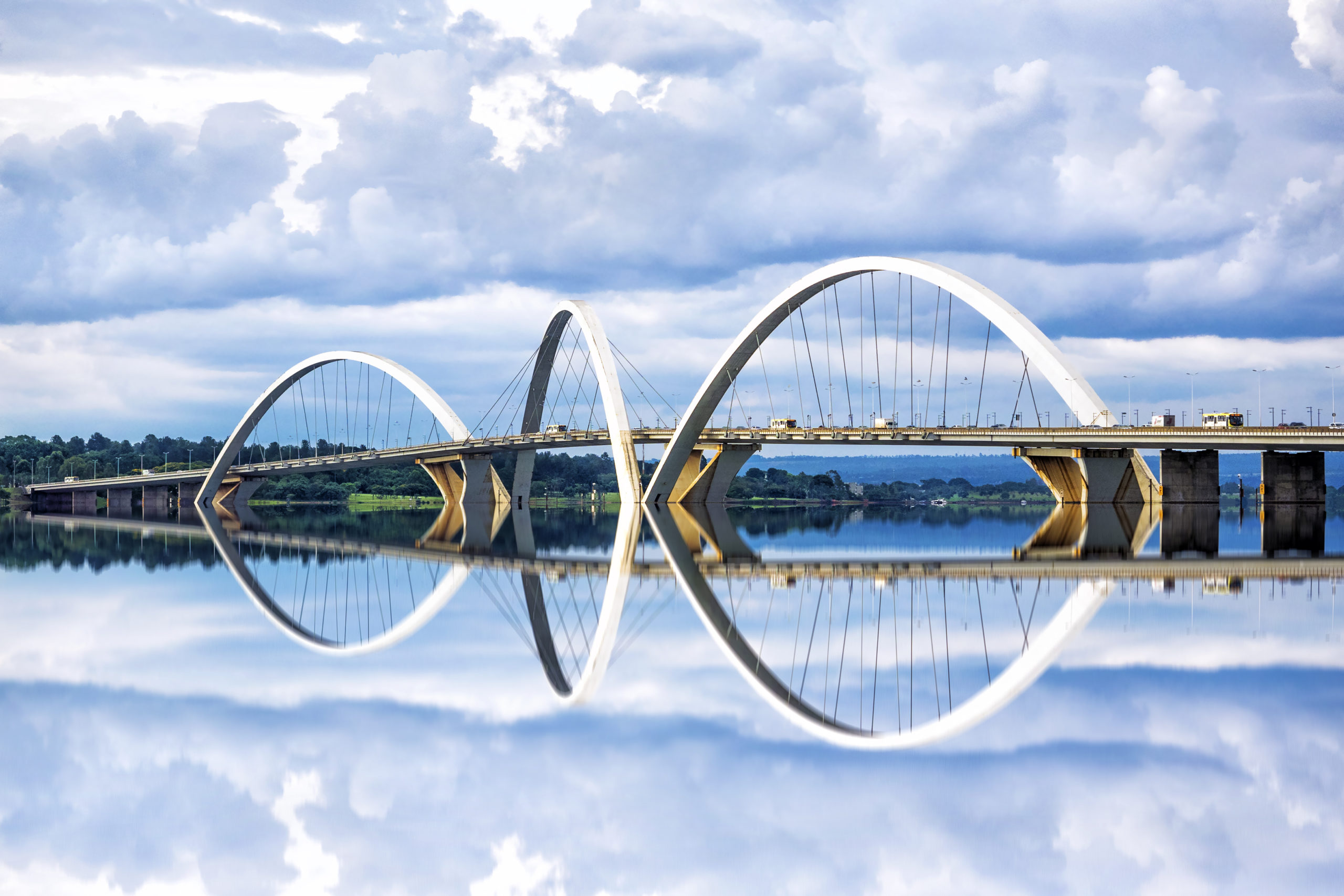
Designed by Brazilian architect Alexandre Chan and structural engineer Mário Vila Verde, Brazil’s Juscelino Kubitschek Bridge was completed in 2002. It consists of three sweeping steel arches crisscrossing over 3,900 feet of deck that overlooks Lake Paranoá in the capital city of Brasília. The impressive structure is named after former Brazilian president Juscelino Kubitschek de Oliveira, who constructed Brasília in the late 1950s.
Pont Jacques Chaban-Delmas — Bordeaux, France
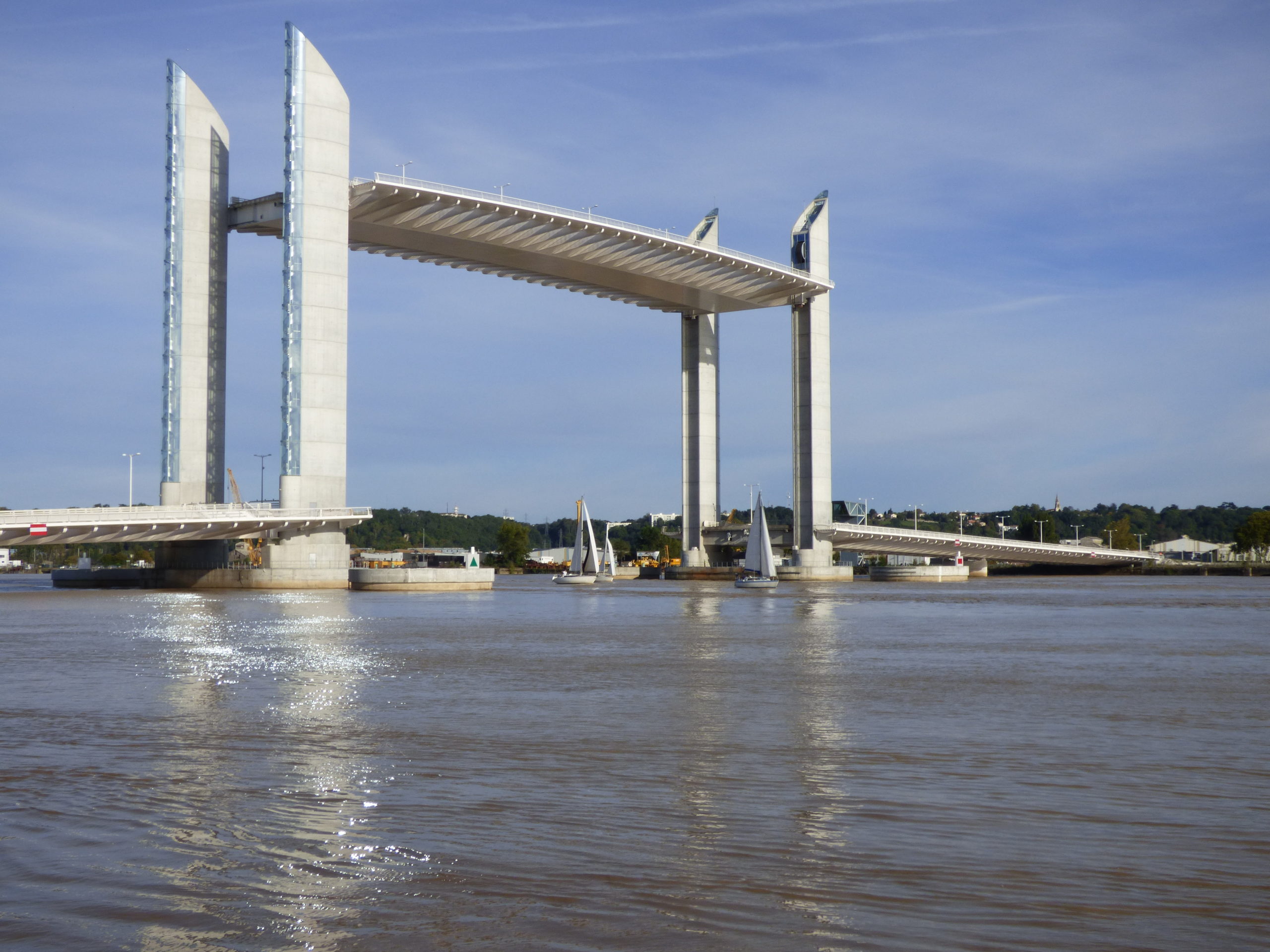
The highest vertical lift bridge in Europe since it opened in 2013 is the Pont Jacques Chaban-Delmas over the Garonne in Bordeaux, France. (Vertical lift bridges use a combination of counterweights and cables to move an interior lift span section that remains horizontal as it is raised up and down like an elevator, allowing river traffic to pass underneath.) The Pont Jacques Chaban-Delmas also boasts a lighting system on its towers, which changes color depending on the tide level.
Mathematical Bridge — Cambridge, UK
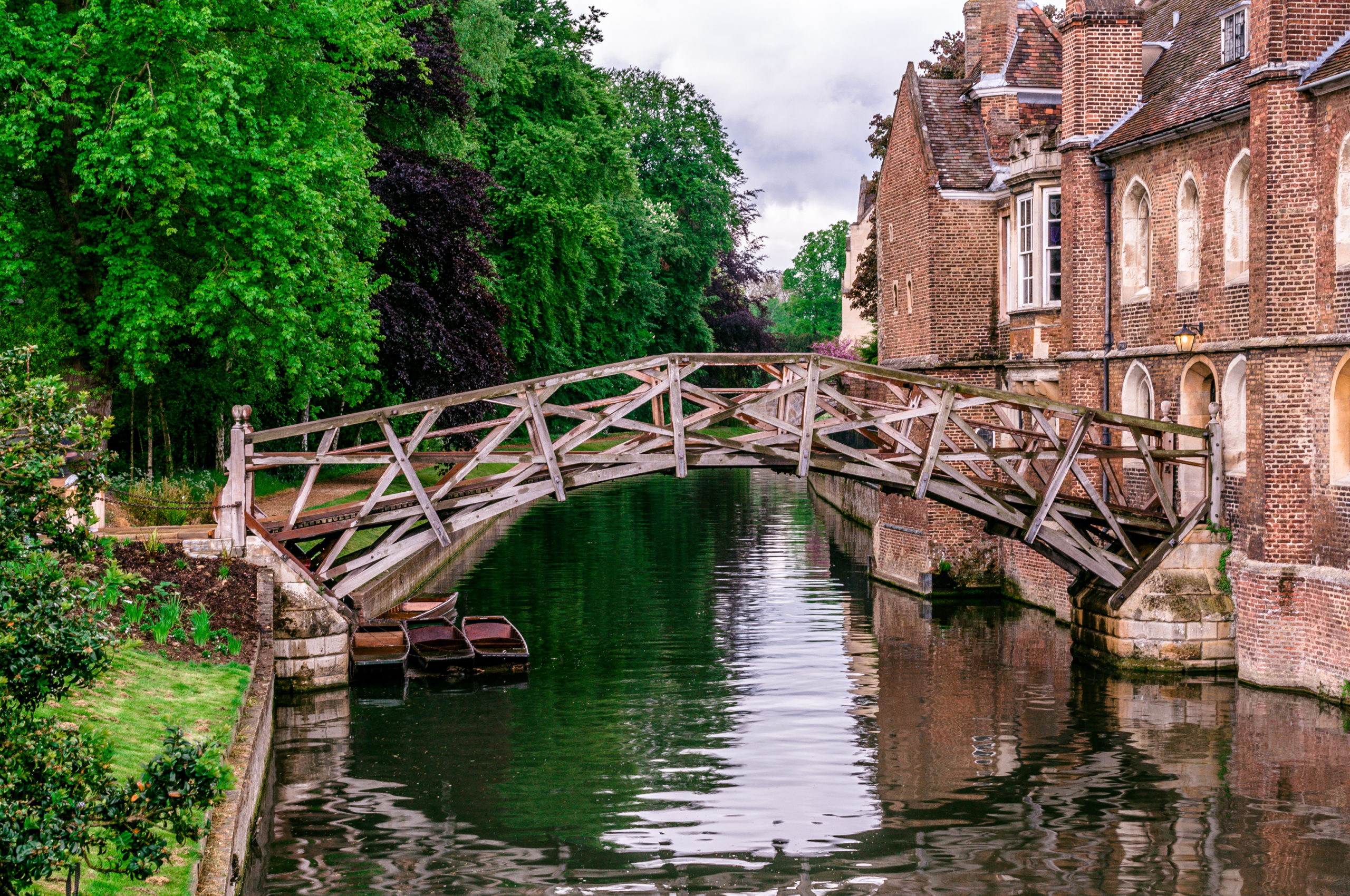
Officially named the Wooden Bridge, the Mathematical Bridge in Cambridge, England connects two parts of Queens’ College. It was built in 1749 by James Essex the Younger, a renowned English builder and architect, and is made entirely out of straight timbers. The horizontal part of the bridge that seems to span the entire 50-foot river actually consists of six shorter timbers jointed end-to-end.
The Wind And Rain Bridge — Sanjiang County, China
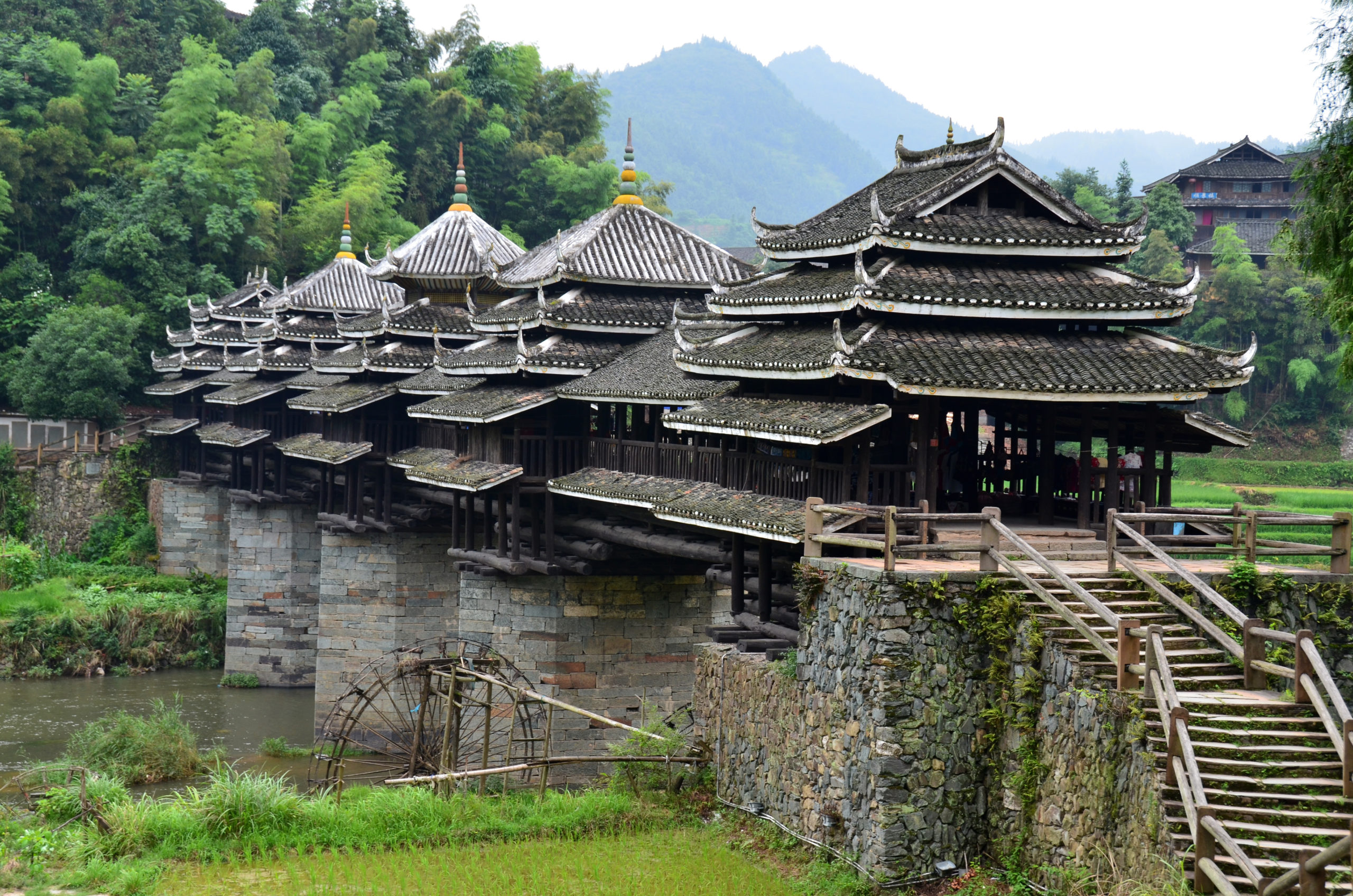
The stunning Wind and Rain Bridge on the Linxi River of Sanjiang County is officially called the Yongji Bridge of Chengyang. It was constructed in 1916 to resemble a rainbow, built on five thick pillars, with multi-story wooden structures with layered roofs atop each one. The builders used no nails or rivets to create the bridge, instead dovetailing thousands of pieces of wood.
Da Vinci Bridge — Ås, Norway
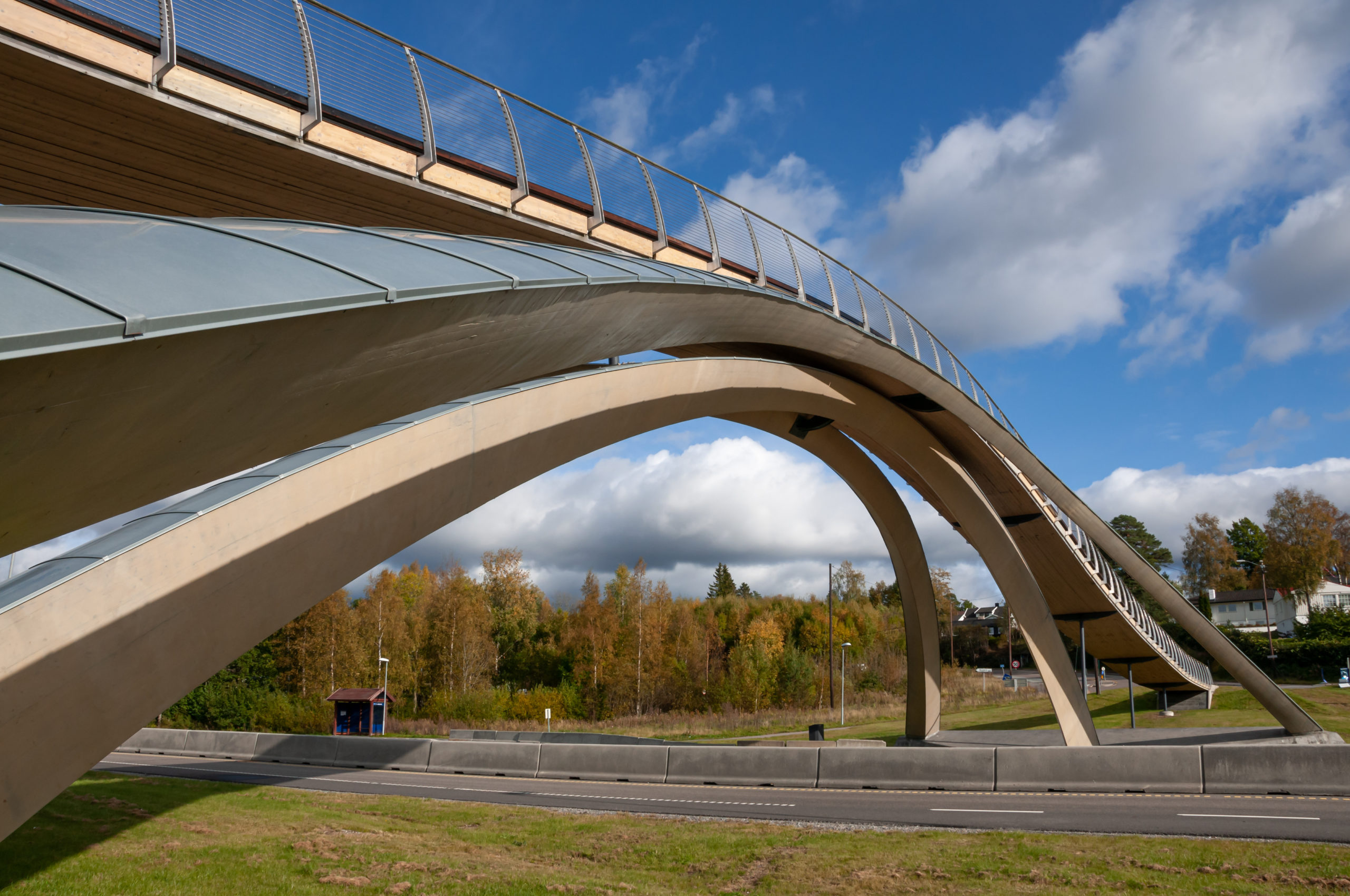
Artist and painter Vebjørn Sand channeled Leonardo da Vinci when he designed a laminated-wood parabolic-arch walking and cycling bridge in Norway in 2001. In fact, the design was based on a 1502 sketch by da Vinci for a bridge over the Golden Horn for Sultan Bayezid II of Constantinople (now Istanbul). The elegant da Vinci Bridge in Norway had a grand unveiling, with Queen Sonja revealing it in a ceremony involving cranes that lifted an enormous white cloth draped over the bridge.
Seri Wawasan Bridge — Putrajaya, Malaysia
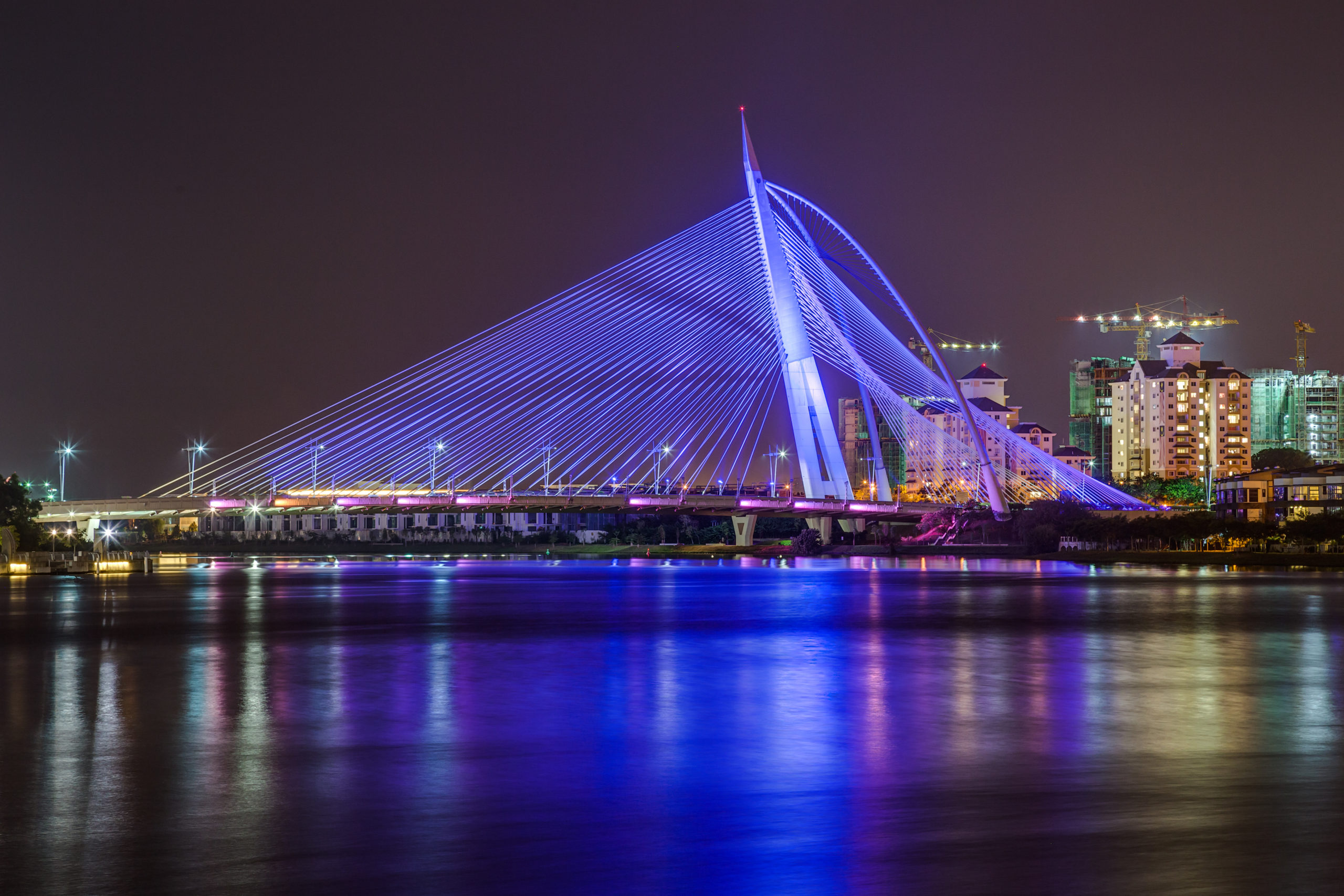
The beautiful Seri Wawasan Bridge is one of the main bridges in the city of Putrajaya, the administrative center of Malaysia. The bridge, built in 2003, features a futuristic, asymmetric design that resembles a sailing ship. At nighttime, it’s wonderfully showcased with changing colored lighting.
Langkawi Sky Bridge — Pulau Langkawi, Malaysia
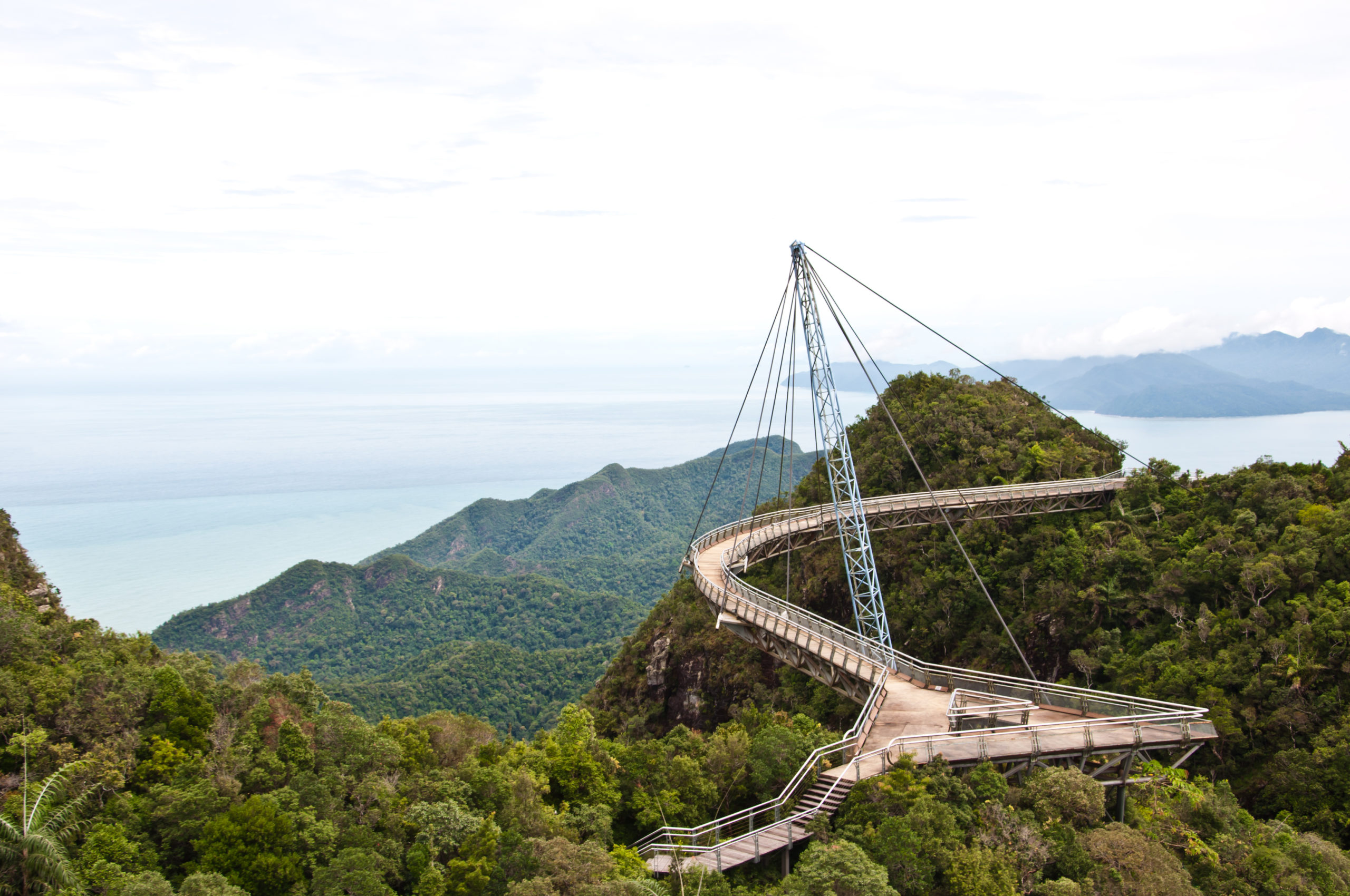
Perched 2,300 feet above sea level, the winding pedestrian Langkawi Sky Bridge, completed in 2005, is accessible only by foot or cable car. It offers scenic views of Mount Mat Cinchang, but it’s not for the faint of heart — or stomach. At its highest point on a clear day, you can see Tarutao Island in Thailand.
Capilano Suspension Bridge — North Vancouver, Canada
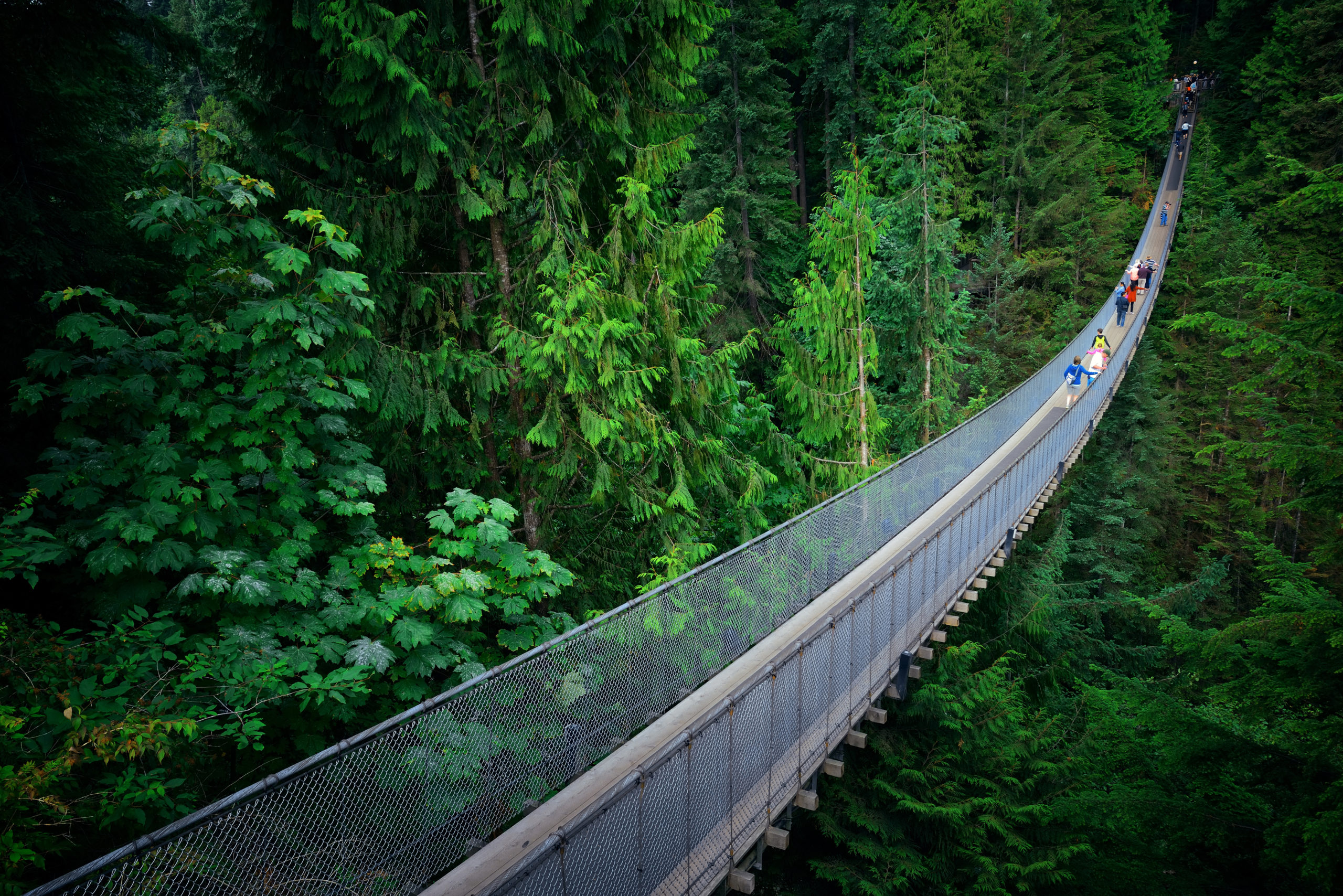
The best way to explore the rainforests of North Vancouver is by Capilano Suspension Bridge. Located in the Treetops Adventure park, it’s 460 feet long and more than 200 feet above the river below. One of the most popular tourist attractions in the area, it’s been crossed by millions of people since 1889 when the original was built.
Living Root Bridges — Cherrapunji, India
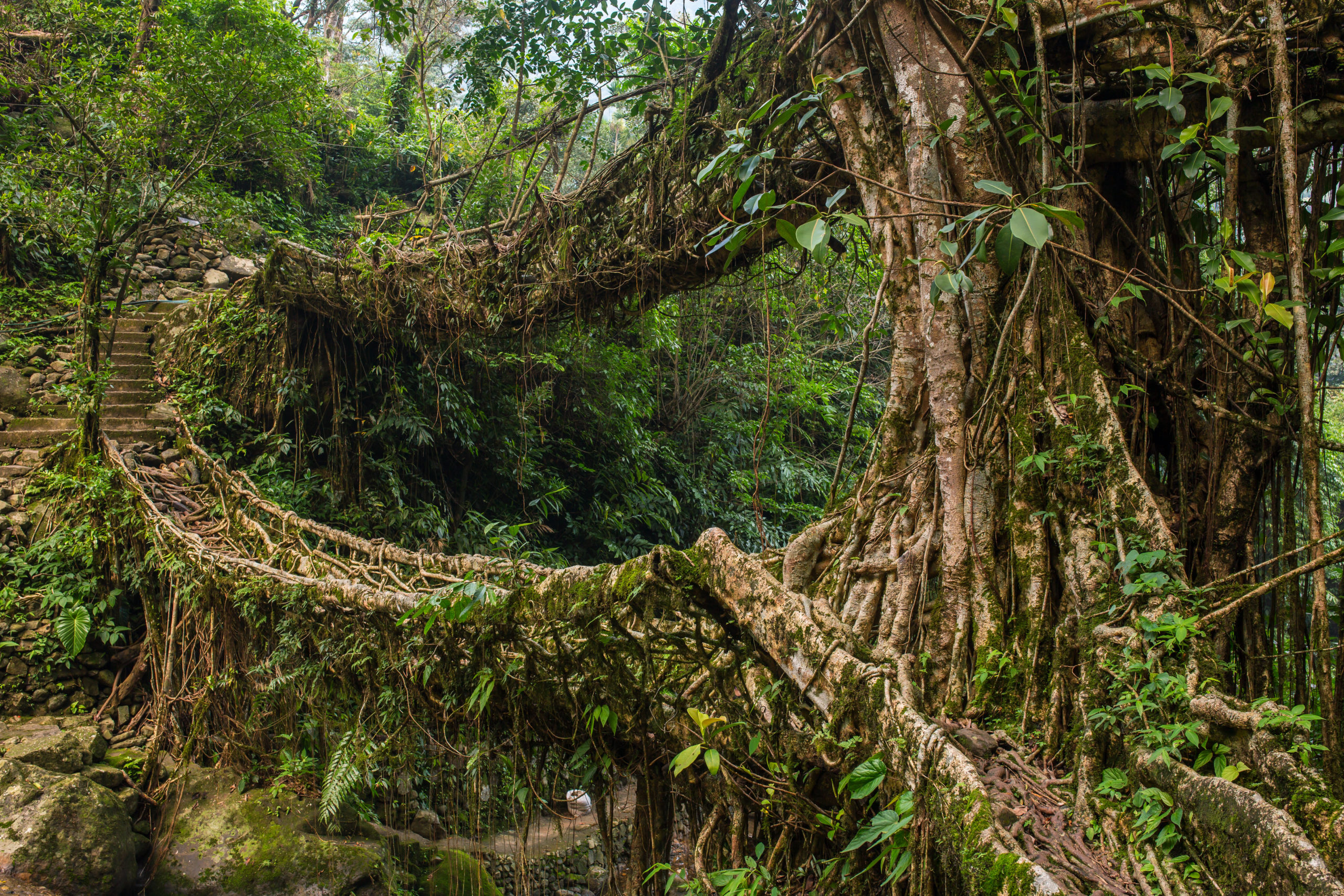
One of the wettest places in the world is Cherrapunji, in northeastern India. It’s home to an incredible tree named the ficus elastica, which has produced sets of roots that start from high up on its trunk. The local Khasis tribe realized that this had huge potential, and used the tree to create amazing living root bridges over the riverbanks by carefully guiding the roots when the tree is young. Some of these bridges are more than 100 feet long.
Benson Bridge — Oregon, USA
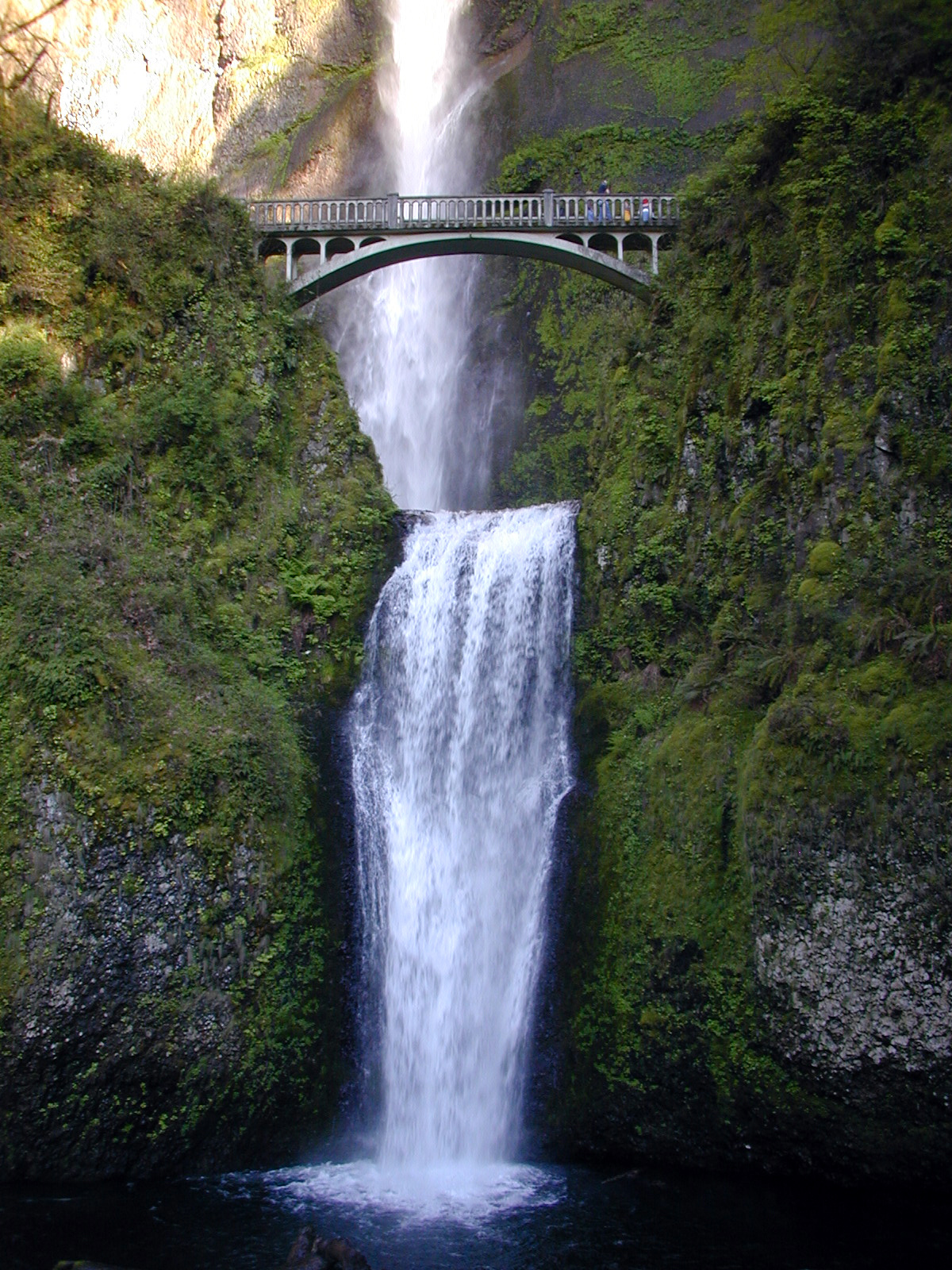
The most visited natural recreation site in the Pacific Northwest is Multnomah Falls, the fourth-highest waterfall in the U.S. It’s fed by underground springs from Larch Mountain, and it has its own viewing platform named Benson Bridge. Built in 1914 by Simon Benson, it’s probably the most photographed architectural structure in Oregon.
Ponte Vecchio — Florence, Italy
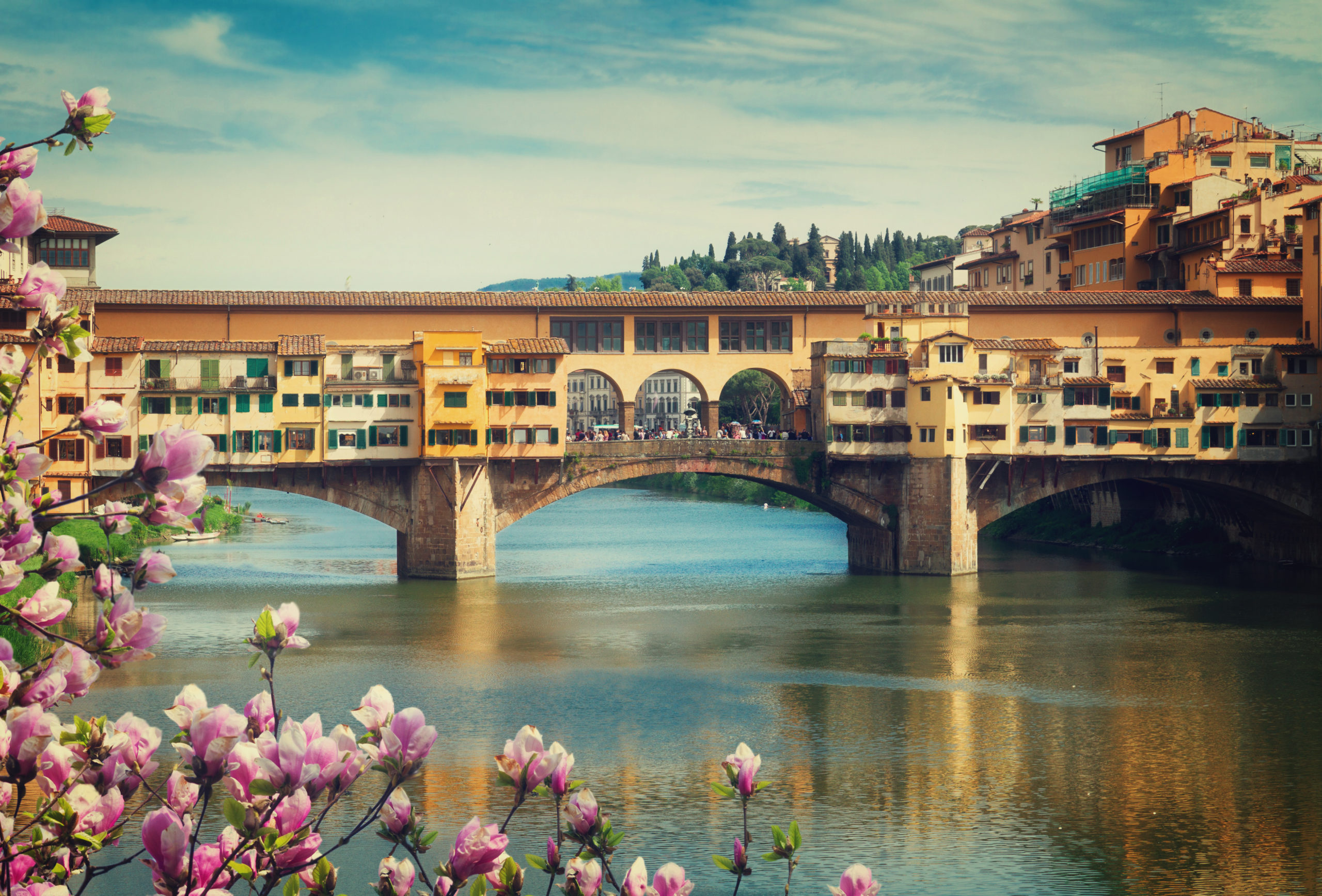
The Ponte Vecchio, which means “old bridge” in Italian, is a medieval stone structure over the Arno River in Florence. Its rich history goes back to Roman times, and it survived attack during World War II due to an express order from Adolf Hitler. But what the bridge is best known for is its row of shops — jewelers, art dealers and souvenir sellers have replaced the butchers, tanners and farmers that once traded from there.
The Helix Bridge — Marina Bay, Singapore
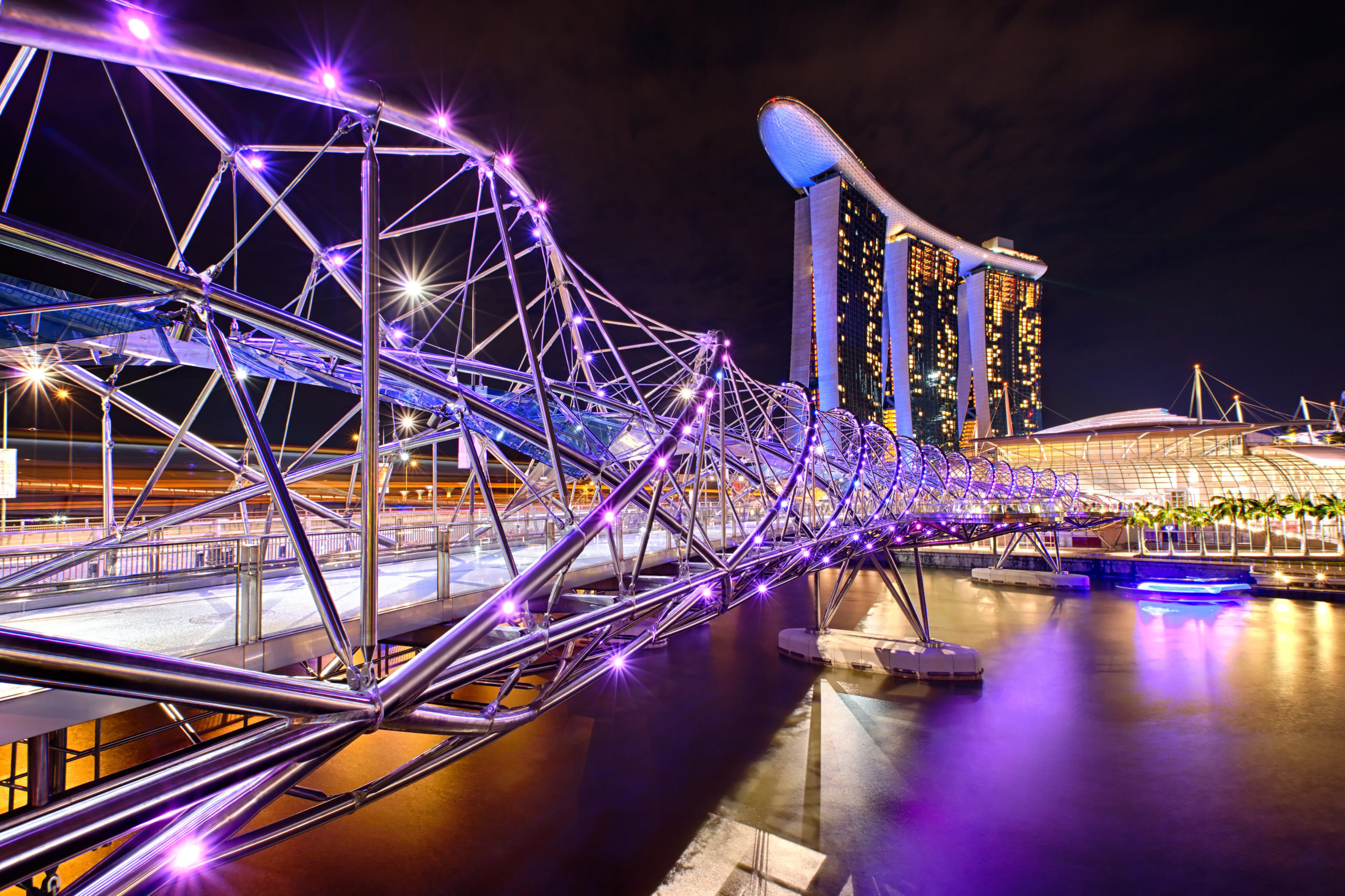
Inspired by the geometric arrangement of a DNA strand, the Helix Bridge in Singapore’s Marina Bay is 918 feet long. It was built (of a special type of stainless steel) over two years and officially opened in 2010. The bridge is considered to be an example of top-class architecture and engineering. At night, the bridge is lit up by LED lights, showing the two twisting helix tubes at their best.
Henderson Waves — Singapore
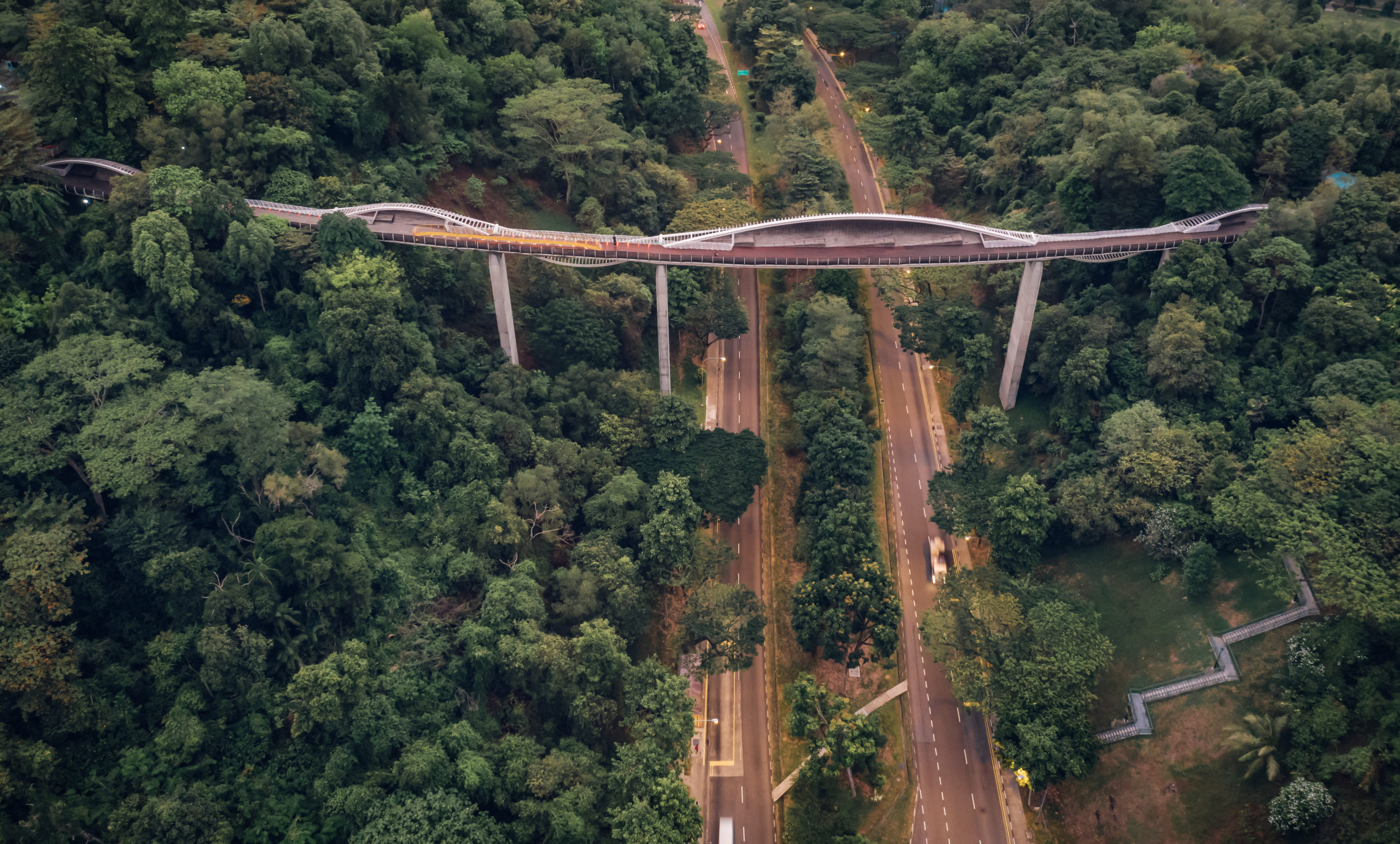
The Henderson Waves pedestrian bridge connects two parks (Mount Faber Park and Telok Blangah Hill Park) in the south of Singapore. True to its name, the 899-foot bridge recreates the shape of a wave, held in place with steel arches and curved slats of dense Balau wood, which is only found in Southeast Asia.
Kakum Canopy Walk — Ghana
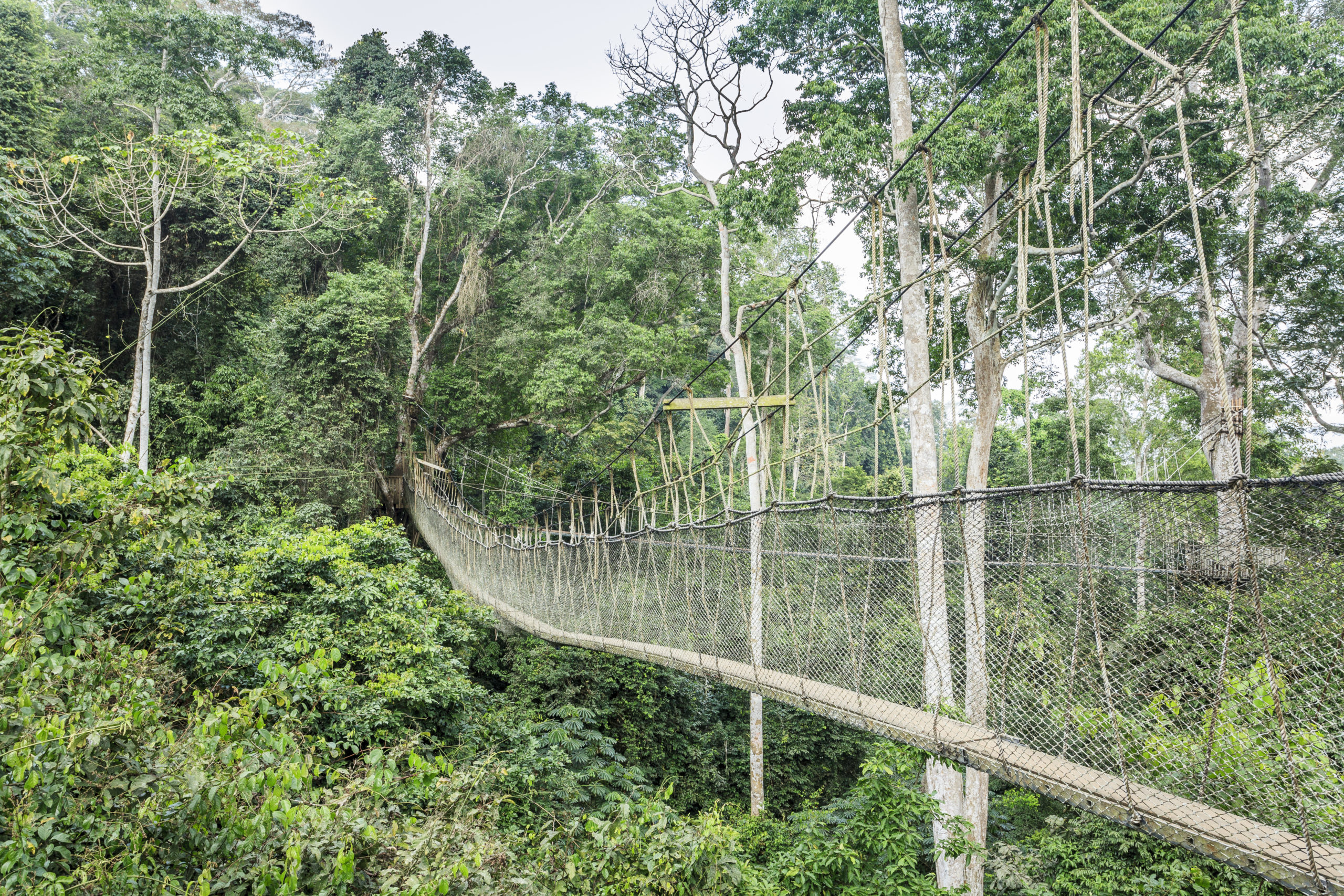
Within the Kakum National Park in the central region of Ghana is a series of rope-style bridges, stretching 1,148 feet to connect seven tall treetops. The canopy walk gives visitors the opportunity to get close to the amazing wildlife in the rainforest. However, it isn’t for anyone with a fear of heights — it sits more than 490 feet above the canopy floor.
Pont Du Gard Aqueduct — Gard, France
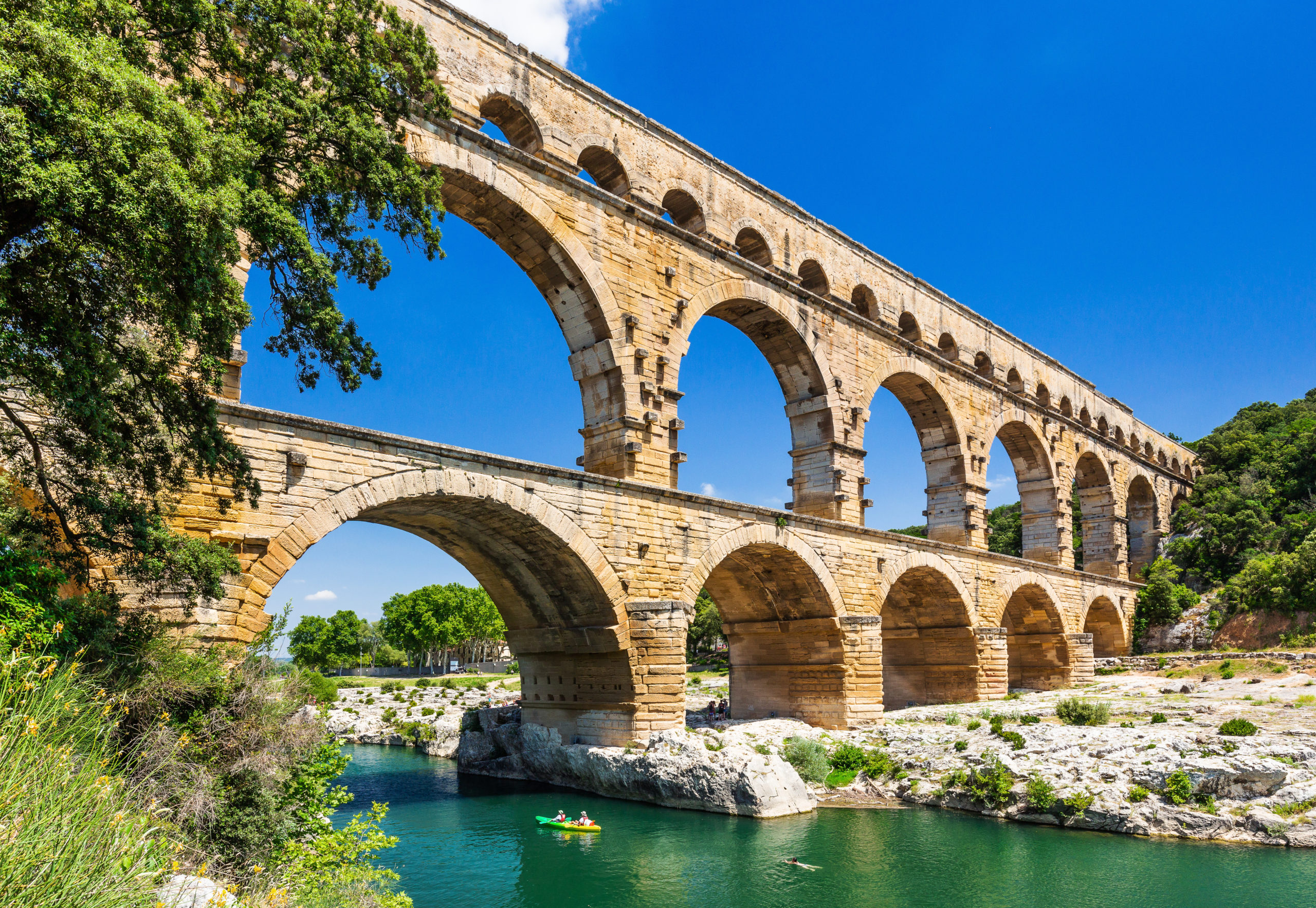
The UNESCO world heritage site Pont du Gard Aqueduct, located near Nimes and Avignon, is one of the most visited ancient monuments in France. Made entirely without mortar (the aqueduct’s heavy stones were cut to fit together perfectly), it’s believed to date back to between 19 BC and 150 AD, and became a tollgate in the Middle Ages. Finally, it became a road bridge in the 18th century.
Millau Viaduct — France
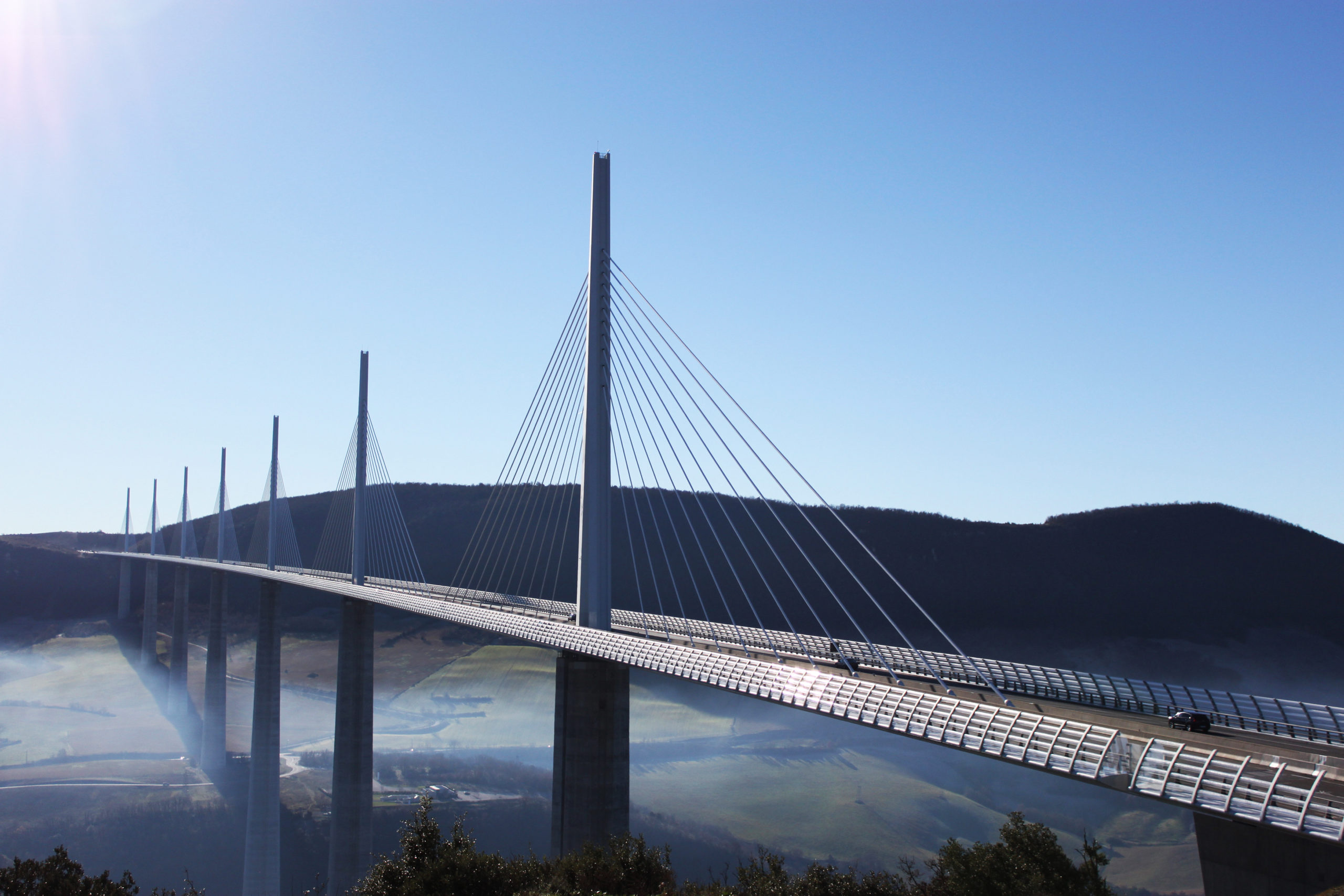
Another jaw-dropping construction on French soil, the Millau Viaduct was the world’s tallest bridge — reaching almost 1,150 feet above ground level at its highest point — until China’s Duge bridge edged higher in 2016. Built by a team of architects from France and the U.K. over a period of three years, the Millau Viaduct has won awards for its design.
Jacques Chirac, former President of France, described the bridge as “a magnificent example, in the long and great French tradition, of audacious works of art, a tradition begun at the turn of the 19th and 20th centuries by the great Gustave Eiffel.”
Mozesbrug (Moses Bridge) — Halsteren, Netherlands
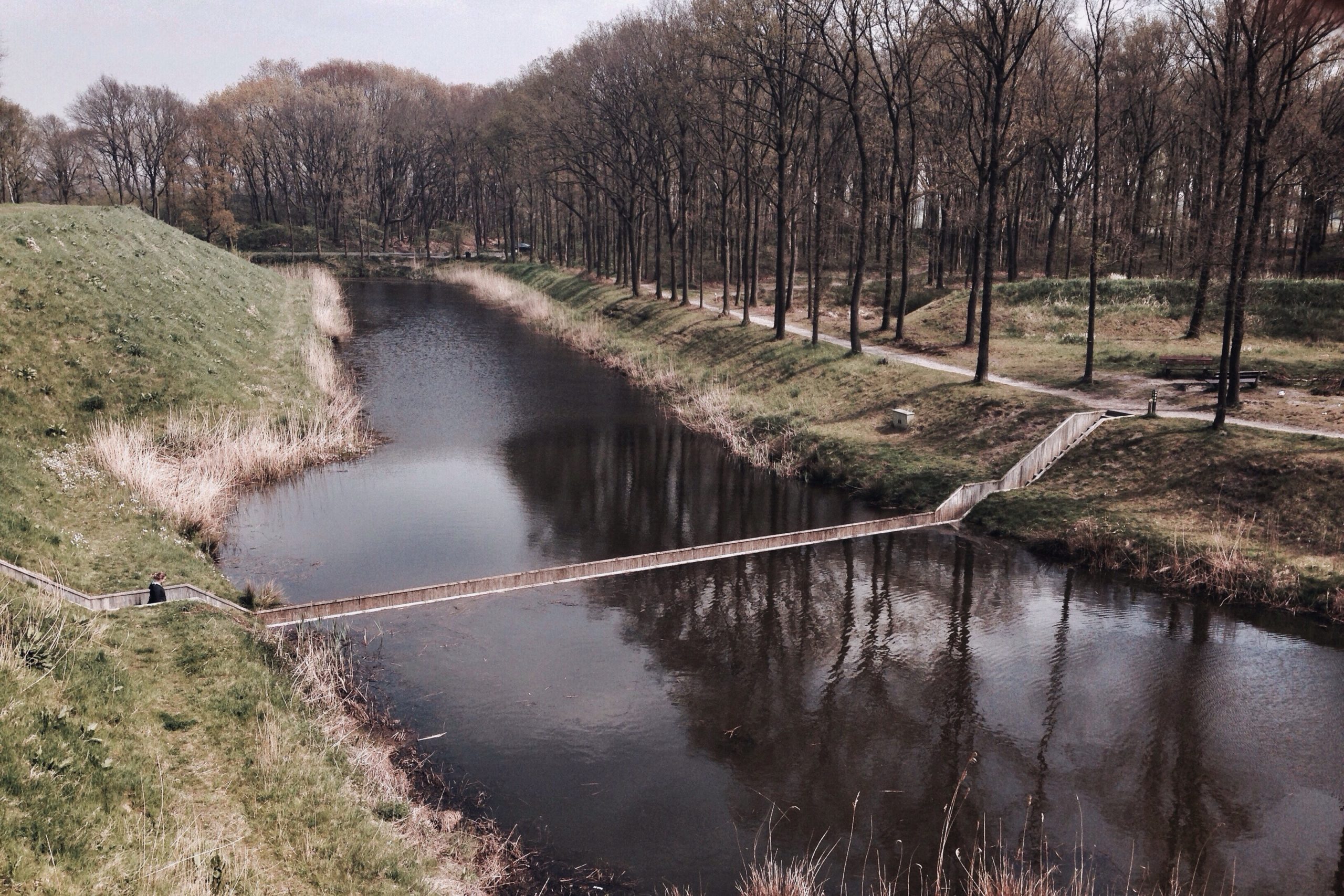
The West Brabant Water Line is a defense-line made up of several fortresses and cities with inundation spots in the southwest part of the Netherlands. The Moses Bridge, part of the disused Fort de Roovere, was dug into the moat of the fort to enable access without building an unattractive modern bridge. Because it extends below the waterline, it’s actually a sort of “anti-bridge,” but it’s very cool nonetheless.
Akashi-Kaikyo (Pearl Bridge) — Kobe-Naruto, Japan
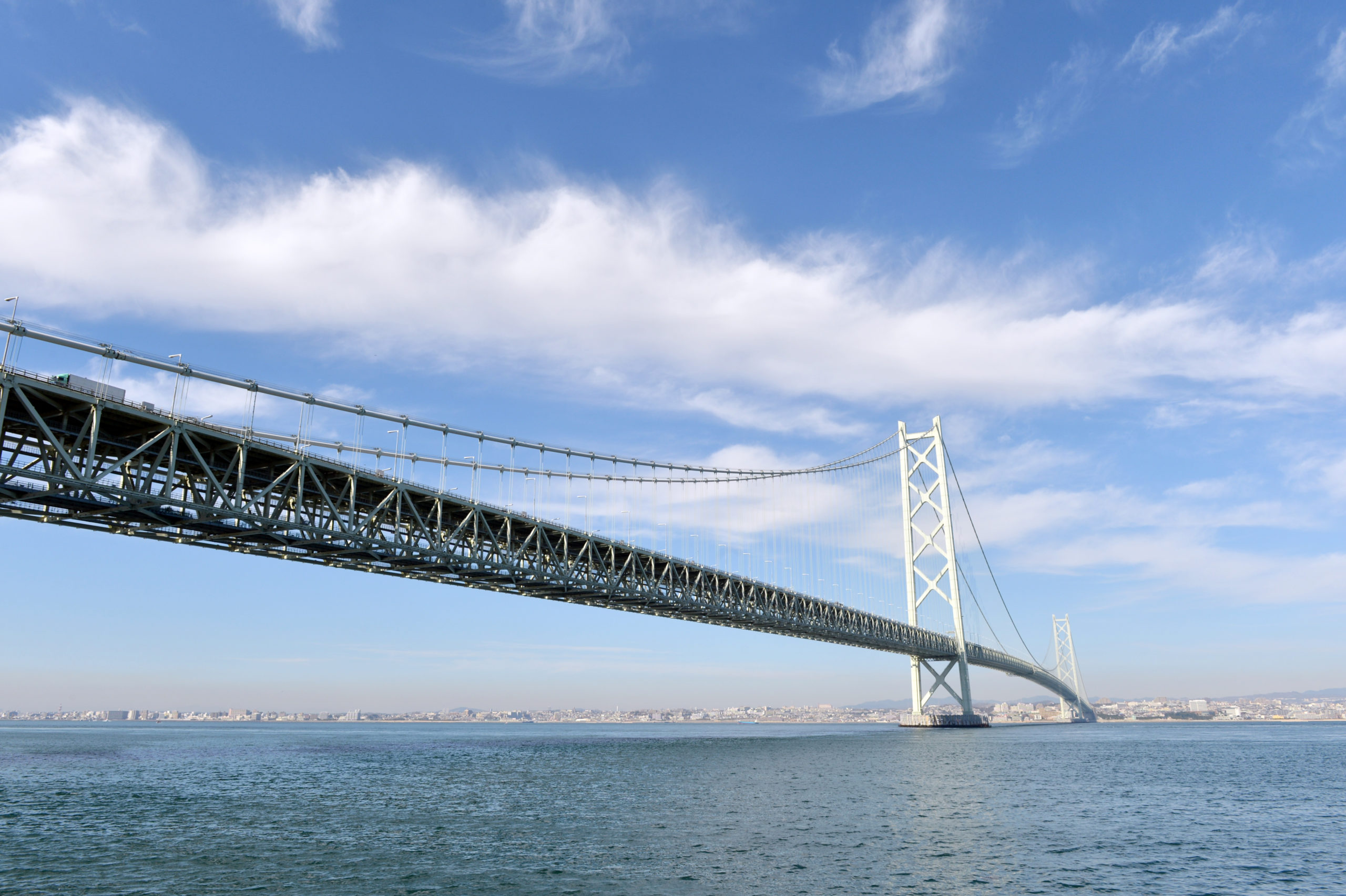
With a span of 12,831 feet, the Pearl Bridge took the title of the world’s longest suspension bridge when it opened in 1998. Its strength was tested even before it opened, when it survived the Kobe earthquake in 1995. It survived, but the two towers, which were still under construction, were pushed more than 3 feet farther apart.
Golden Gate Bridge — California, USA

Arguably the most recognizable bridge in the world is San Francisco’s Golden Gate Bridge. And while the industrial age suspension design may not be the most beautiful of bridge designs, it feels wrong to leave it off a list of incredible bridges. It’s impossible to imagine the Bay Area skyline without it.
Oresund Bridge — Sweden And Denmark
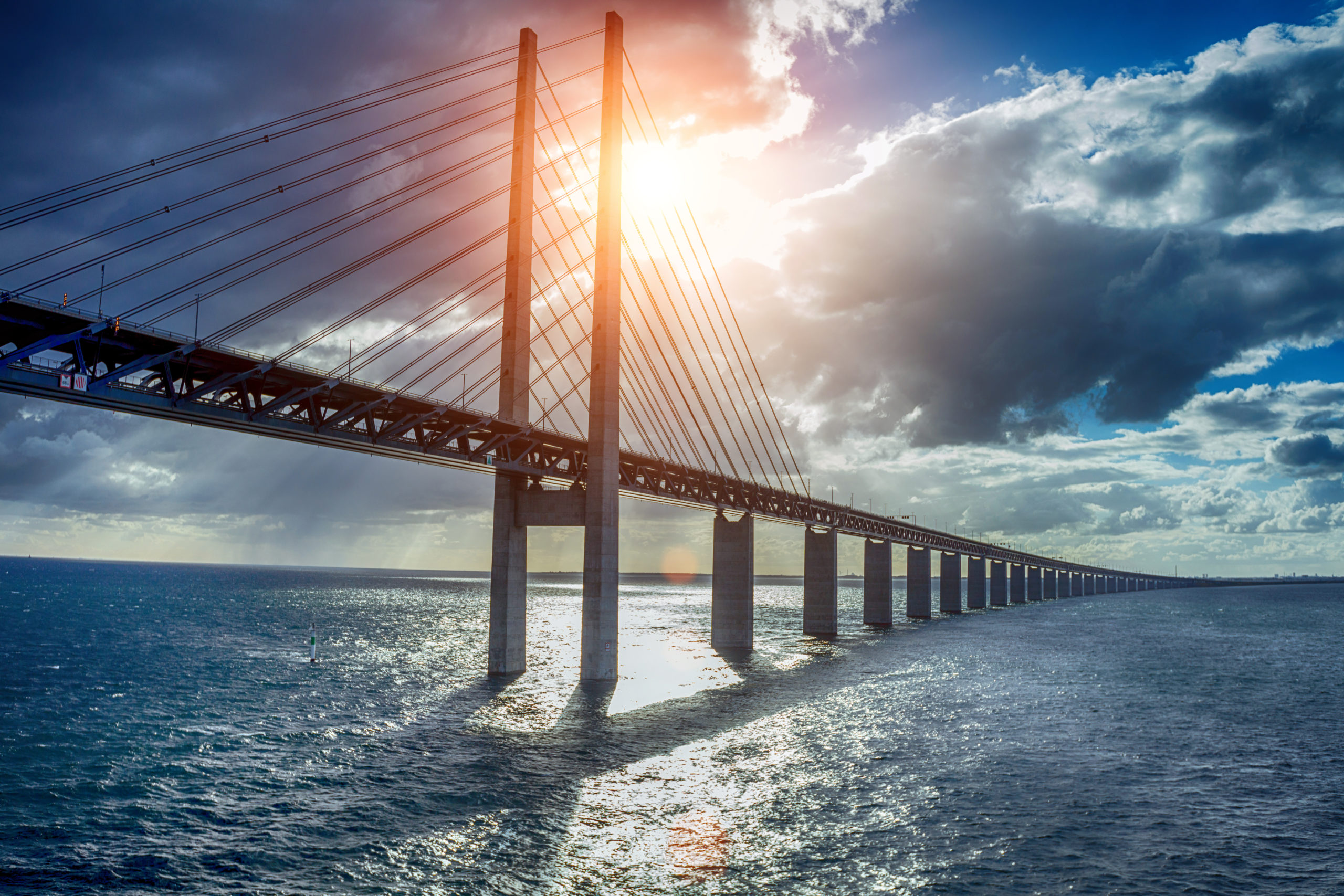
The Oresund Bridge connects Denmark’s capital city Copenhagen with the Swedish city of Malmö. The bridge, which opened in 1999, accommodates rail, road and sea traffic, with a raised central section for the latter. The Oresund has been a huge boost to the economies of Copenhagen and Malmö, and it also has a claim to fame — the hit TV show “The Bridge” is named in its honor (and the first series begins with the discovery of a dead body exactly on the center of the bridge, necessitating a joint investigation between law enforcement on either side).
Rakotzbrücke (Devil’s Bridge) — Gablenz, Germany
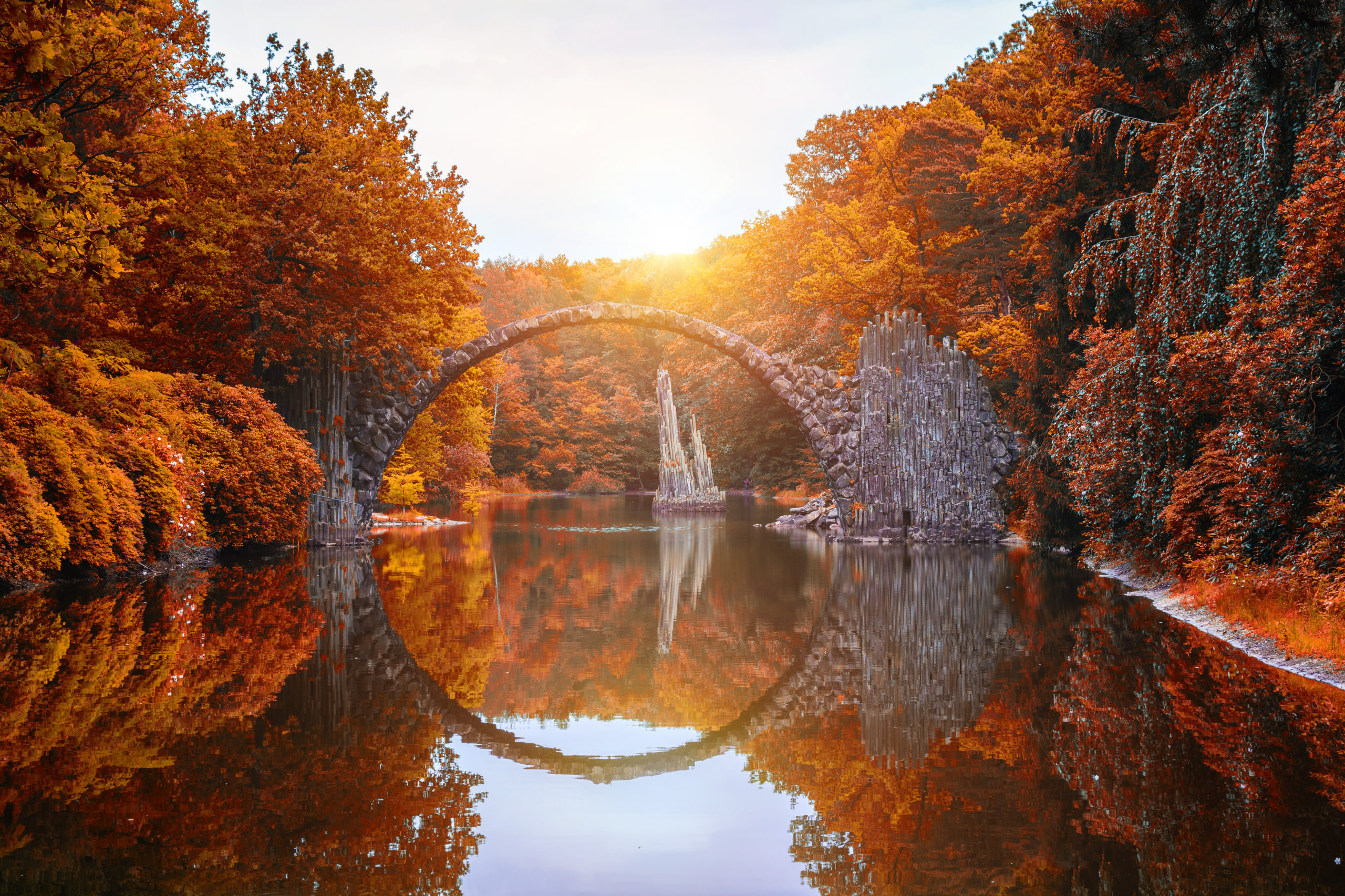
The stunning stone Rakotzbrücke, known as Devil’s Bridge, creates the illusion of a perfect circle when reflected in the water below — hence the nickname. How could a mere mortal build such a miraculous structure? As of 2019, reconstruction of the bridge, originally built in the mid-1800s, was underway.
Szechenyi Chain Bridge — Budapest, Hungary
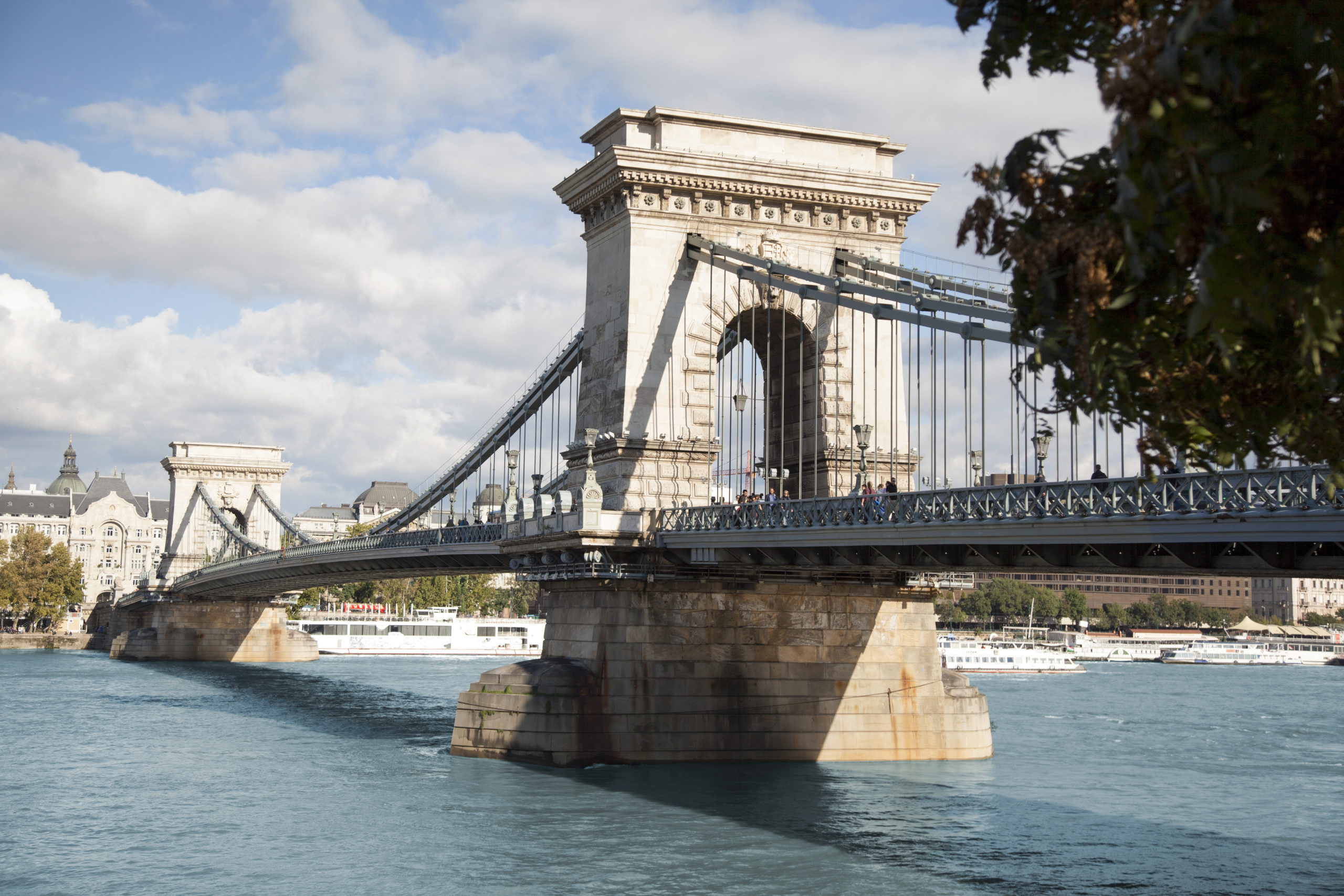
The Széchenyi Chain Bridge has spanned the River Danube between Buda and Pest since 1849, and thus connects the western and eastern sides of Budapest, the capital of Hungary. Walking across it provides an excellent opportunity to take in stunning views and historical landmarks, including the Parliament building in Pest and Castle Hill in Buda. The bridge was rebuilt after being destroyed during WWII. In 2001, Hungarian stunt pilot Peter Besenyei became the first person to fly upside down under the bridge.
Sponsored Content

